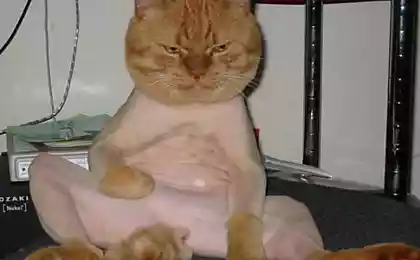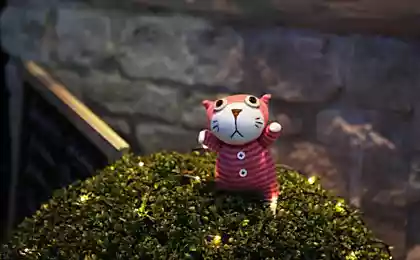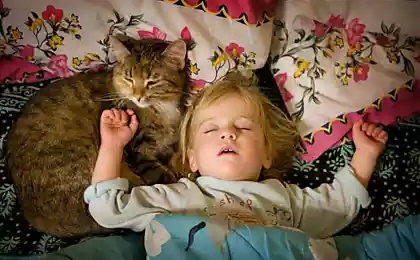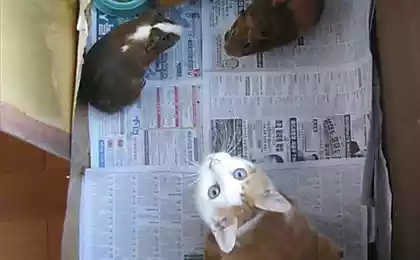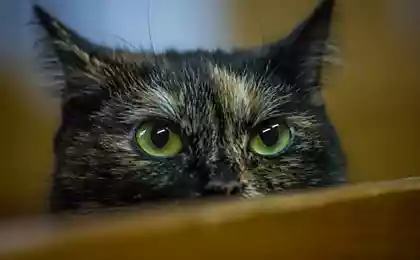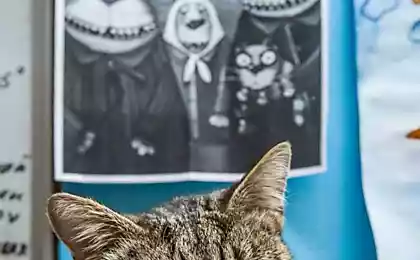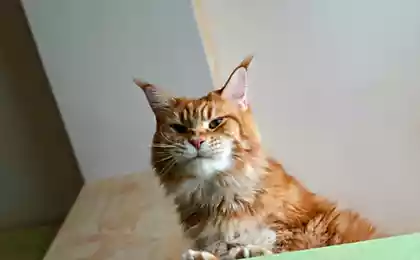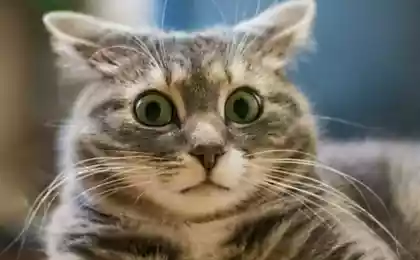543
Why cats purr?
The most obvious reason rumbling cats – a state of complete satisfaction. However, studies indicate that in fact it is also a way of communication and a form of self-medication. Yes, your furry friend purrs when you stroke his hair, but he also makes this sound when scared or feels threatened, for example, during a visit to the doctor.
Veterinarian Kelly Morgan equates the reaction to the smile. "People smile when I'm nervous, when I want something or in a moment of happiness, because, perhaps, the rumbling is more like a soothing gesture," she says.

Rumbling of a cat starts in the brain. Cyclic oscillatory neural network sends signals to the laryngeal muscles, causing them to oscillate with a frequency of 25 to 150 vibrations per second. This causes the separation of the vocal cords when the cat inhales and exhales, producing a rumbling.
This is not the case for all members of the cat family. Noise, Pets and some wild cats and their relatives of viverra, genette mongooses and even hyenas, raccoons and Guinea pigs know how to make those sounds. However, cats are capable of growling, cannot roar and Vice versa as the structures around the throat of a snarling cats stiff enough to allow such animals as lions, purr.
Evolution rightly gave the cat the ability to roar. These animals move a lot on the Prairie in search of prey, but because of the roar they need to protect the pride and territory. At the same purring cats are smaller and tend to a lonely lifestyle, but because they have no need to compete with each other for food. Through scent they mark their territory and do not need a considerable ways to transfer information.

However, your cat may purr to communicate with you. Scientists from the University of Sussex, UK, believe that domestic cats can purr to hide a scream that annoys owners, appealing at the same time the instinct of nutrition.
Researchers examined the sound spectrum of 10 cats rumbling and found an unexpected peak with a frequency of 220-250 Hz during normal rumbling. The crying of the child in the similar frequency range from 300 to 600 Hertz.
Karen Makkom, who led the study, says that cats can use inherent in man the propensity to respond to sounds similar to crying associated with feeding of the offspring. According to veterinarians, cats, obviously, have learned to make those sounds to get people faster to feed them.
However, the rumbling could be not only a way of communicating. Some scientists believe that cats urchat for the purposes of self-medication. According to them frequency within 24-140 vibrations per second have a therapeutic impact on bone growth, soothing pain and treating the wounds. Record the rumbling of the different felids, including domestic cats, ocelots, cheetahs and pumas, revealed that all the sounds fall in the range for anabolic bone growth.

The rumbling benefit not only the cat, but his owners. Studies indicate that males are much better reduce stress and blood pressure than other Pets. As a result, 10-year study revealed that cat owners 40 percent less prone to heart attacks than people who do not contain a house cat, and rumbling may play a role.
"Growling is an auditory stimulus that people associate with peace and tranquility, says Dr. Rebecca Johnson, Director of the centre for Research on the interaction of humans and animals. It adds positivity to everything we do, and can also contribute to the relaxation effect while interacting with the cat."
Source: /users/104
Veterinarian Kelly Morgan equates the reaction to the smile. "People smile when I'm nervous, when I want something or in a moment of happiness, because, perhaps, the rumbling is more like a soothing gesture," she says.

Rumbling of a cat starts in the brain. Cyclic oscillatory neural network sends signals to the laryngeal muscles, causing them to oscillate with a frequency of 25 to 150 vibrations per second. This causes the separation of the vocal cords when the cat inhales and exhales, producing a rumbling.
This is not the case for all members of the cat family. Noise, Pets and some wild cats and their relatives of viverra, genette mongooses and even hyenas, raccoons and Guinea pigs know how to make those sounds. However, cats are capable of growling, cannot roar and Vice versa as the structures around the throat of a snarling cats stiff enough to allow such animals as lions, purr.
Evolution rightly gave the cat the ability to roar. These animals move a lot on the Prairie in search of prey, but because of the roar they need to protect the pride and territory. At the same purring cats are smaller and tend to a lonely lifestyle, but because they have no need to compete with each other for food. Through scent they mark their territory and do not need a considerable ways to transfer information.

However, your cat may purr to communicate with you. Scientists from the University of Sussex, UK, believe that domestic cats can purr to hide a scream that annoys owners, appealing at the same time the instinct of nutrition.
Researchers examined the sound spectrum of 10 cats rumbling and found an unexpected peak with a frequency of 220-250 Hz during normal rumbling. The crying of the child in the similar frequency range from 300 to 600 Hertz.
Karen Makkom, who led the study, says that cats can use inherent in man the propensity to respond to sounds similar to crying associated with feeding of the offspring. According to veterinarians, cats, obviously, have learned to make those sounds to get people faster to feed them.
However, the rumbling could be not only a way of communicating. Some scientists believe that cats urchat for the purposes of self-medication. According to them frequency within 24-140 vibrations per second have a therapeutic impact on bone growth, soothing pain and treating the wounds. Record the rumbling of the different felids, including domestic cats, ocelots, cheetahs and pumas, revealed that all the sounds fall in the range for anabolic bone growth.

The rumbling benefit not only the cat, but his owners. Studies indicate that males are much better reduce stress and blood pressure than other Pets. As a result, 10-year study revealed that cat owners 40 percent less prone to heart attacks than people who do not contain a house cat, and rumbling may play a role.
"Growling is an auditory stimulus that people associate with peace and tranquility, says Dr. Rebecca Johnson, Director of the centre for Research on the interaction of humans and animals. It adds positivity to everything we do, and can also contribute to the relaxation effect while interacting with the cat."
Source: /users/104
